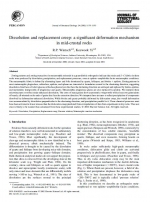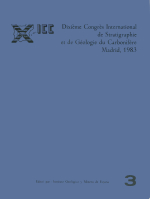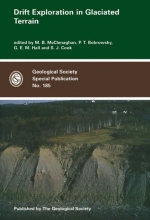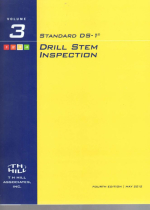PAPERS PRESENTED IN SECTION 1
M.N. SOLOVIEVA, V.A. CHIZHOVA, O.L. EINOR, A.D. GRIGORIEVA, E.A. REI-TLINGER, M.V. VDOVENKO.—Review of Recent Data on the Carboniferous Stratigraphy of the USSR
M.N. SOLOVIEVA, О.P. FISUNENKO, N.V. GOREVA, I.S. BARSKOV, V.S. GUBAREVA, A.V. DZHENCHURAEVA, I.I. DALMATSKAYA, E.A. IVANOVA, V.I. POLETAEV, A.V. POPOV, Z.S. RUMYANTSEVA, V.K. TETER-YUK, E.M. SHIK.—New Data on Stratigraphy of the Moskovian Stage
M.N. SOLOVIEVA.—Correction of the USSR General Carboniferous Scale in Connection with Restudying the Moskovian Stage Stratotype and a New Model for the Correlation of the Lower Moskovian Substage
L.F. GRANADOS, M.N. SOLOVIEVA, E.A. REITLINGER, C. MARTINEZ-DIAZ. — The Bashkirian-Moscovian Boundary Problem in the Asturias (Northwest Spain)
N.J. RILEY, M.J. RAZZO, B. OWENS.—A New Boundary Stratotype Section for the Bolsovian (Westphalian C) in Northern England













